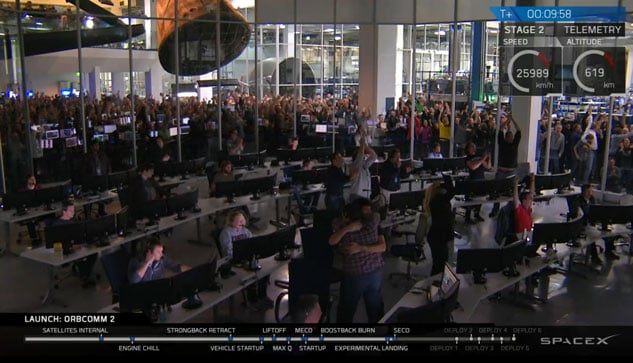X Marks The Spot! SpaceX Makes Historic Successful Vertical Landing Of Falcon 9 Rocket

The significance of this achievement is profound, as the Falcon 9 not only blasted off in to space, but it achieved orbit (launching 11 ORBCOMM satellites in the process) at a height of 200km. Jeff Bezos’ Blue Origin completed a vertical landing of its BE-3 rocket engine last month, but that rocket didn’t travel as high or as fast as the Falcon 9 -- more importantly, it never achieved orbit.
Previously, rockets were a one-way proposition; once launched into space, they were irreparably damaged, making them unsuitable for another launch. But if SpaceX can perfect its reusable rockets -- which could theoretically launch a payload into space, land safely back to Earth, refuel, and then launch again within hours or days -- it could revolutionize the way we ferry not only cargo, but humans into space.
The Falcon 9 reportedly costs SpaceX $16 million to manufacture, and we could imagine estimates in the same ballpark for competing rockets used to deliver payloads into space. However, SpaceX CEO Elon Musk says that the fuel required to put the Falcon 9 into orbit only costs around $200,000. If SpaceX can get away with repeated launches of a single $16 million rocket with $200,000 refueling costs (with some added expenses thrown in for retrofits and component wear and tear over time), SpaceX will have a huge advantage over its competition which is sinking millions upon millions into new rockets for each and every launch.
While the previous [failed] landings used a standard Falcon 9 rocket, tonight’s launch used a Falcon 9 v1.1 Full Thrust (also known as Falcon 9 v1.2). It features a revamped Merlon 1D engine that provides more thrust and increased structural “reusability” for repeat launches.
“What we're also doing is modifying the structure a little bit. I want to be building only two versions, or two cores in my factory, any more than that would not be great from a customer perspective,” said SpaceX President Gwynne Shotwell back in March. “It's about a 30% increase in performance, maybe a little more.”
This is just the beginning of a new space race that is now consuming the tech greats of Silicon Valley. You have upstarts like SpaceX and Blue Origin looking to do things that the good ‘ol boy network of defense suppliers has yet to achieve with their vastly superior bank accounts and lobbying support. The future of space travel looks bright, and we have companies like SpaceX to thank for pushing the envelope.



